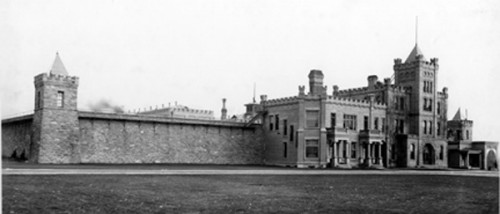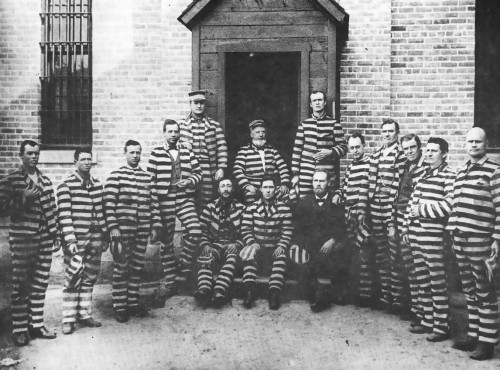by Heidi Grieser
Between 1300 East, 1700 East, 2100 South, and 2400 South, Brigham Young selected 80 acres to be the site of the Utah Territorial Prison in 1853. At the time, the facility was 6 miles from the center of the city, but when the prison was moved to Point of the Mountain in 1951, the city decided to use the site to create Sugar House Park, Highland High School, and a right-of-way for the highway.

Between 1864 and 1871, due to insufficient funds, the prison did not even employ a night guard. Consequently, many prisoners escaped. Between 1855 and 1878, 47 of the 240 convicts escaped, an additional 12 were killed in escape attempts.
(James B. Hill, “History of Utah State Prison, 1850-1952”; pg 47 & 145.) The prison was expanded in 1877 to house the growing number of non-violent polygamist prisoners. Church leaders George Q. Cannon and Abraham Cannon both served time, and the latter kept a detailed journal, describing a cell approximately twenty by twenty-six feet and twelve feet high, lined with three tiers of bunks, each bunk sleeping two men.

Dolores Allen Donohoo remembers, “When the prison was in Sugar House, my sister and I used to walk past it on our way to the library, movies, or shopping in Sugar House, and we would stop and talk to the guards and trustees. Our parents never locked our doors-they felt perfectly safe even though we lived just a street away from the prison. From time to time, prisoners would “walk away” or escape, but they left the area as fast as they could. At one time, after several such escapes, a neighbor boy erected a sign reading ‘CAUTION-PRISONERS ESCAPING’.”

